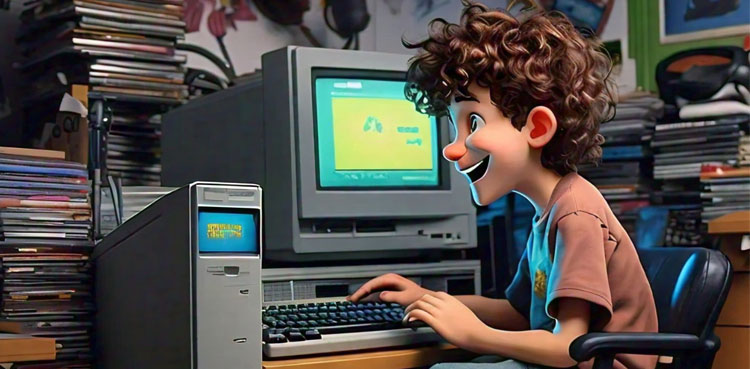
Way back in the days when we all were naive. When we want to become astronauts and pilots and singers when we grow up. We had these newly crisped PCs in our home. Those were the Intel Pentium 3s and 2s and 4s.
One distinctive thing we all remember is that there was this writing that said “intel inside” on the machine. Back then many of us were oblivious to notice and question what is intel only to end up knowing that it was the biggest PC chip provider of the world. And now it’s struggling to make progress and money.
2 days ago, the news broke the internet. Once a long reigning giant intel reported heavy losses and was planning to layoff 15% of its workforce along with cutting down several other non-essential expenses.
Its major chip manufacturing for the PCs and laptops showed a concerning decline as its share price dropped to historical low in the last 50 years. The company failed to achieve its June quarterly target and witnessed a sharp 26% share plummet.
The horrendous depreciation sparked headlines. How a decades ruling brand, the one who’s deeply in the rapidly transforming semiconductor business, could fall down?
A number of bad decisions led to this downfall. These decisions were made in ignorance of the long-term vision and the reluctance to invest in innovation. In fact, this could be the perfect case study on what happens to firms who resist innovation and adaptations. It was Nokia , Kodak, and now intel.
Back in the early 80s, the PC era had boomed like a rocket. Desktop computers were flowing in offices and homes. The computer revolution had become mainstream. And intel was providing key chips for nearly every PC that was being used. It was an ideal monopoly.
Intel’s high-performance semiconductor business has always been the core selling element. The company had invested massively in its semiconductors fraction. The emphasis was motivated by Moore’s Law which was introduced by Gordon Moore, one of the co-founders of intel. The law highlighted the importance that semiconductors will have in the future. How it will adapt and be provided for global devices at much affordable rates was a key belief.
However, over time the company failed to adhere to this very belief. This was evident when the 2000s era brought the mobile phone revolution. Astonishingly the management of intel did not see a future in the smartphone market that required smaller chips with less power consumption.
In fact, Apple’s founder Steve Jobs went to Intel for a partnership. Jobs wanted Intel to make chips for the iphone. IT has been noted in his biography that he met with the CEO of intel Paul Otellini. He refused to partner as he saw no future in the iphone, or even the entire emerging smartphone market.
Additionally , Otellini was more than satisfied with the revenues being generated with the PCs and the laptop chips division. He was planning to further expand that sector instead of establishing new facilities for smaller smartphone chips.
Paul Otellini’s reluctance to adapt and innovate back then took its toll in recent years. Refused by Intel to manufacture its iPhone chips, Steve Jobs headed elsewhere. A British company ARM introduced a new chip design for a lower power usage. IT was ideal for mobile makers. New entrants started flooding the market. AMD, Nvidia, TSMC, Samsung, Qualcomm, Texas Instruments, and many more.
These new entrants swiftly started designing and manufacturing smartphone chips. In two decades, the shares of these companies skyrocketed. Their sales chart went through the roof and their valuation saw enormous gains. Intel on the other hand failed to maintain its market position.
Intel, after observing the intensity of competition finally decided to enter the market with their newly designed chip ATOM. It was first used in Asus devices. However, the company failed to keep up with the rapidly transforming chips that were improving fast. Better versions were being introduced at lighting speed and Intel’s ATOM failed.
Furthermore, Intel’s PC and Laptop division, where bigger chips were being made too, suffered eventually. The team at Intel failed to innovate and introduce better models. Its competitors introduced bigger chips that were suitable for laptops and desktop PCS but were consumer of far less power and much more efficient in performance.
Today TSMC is $777 billion, Qualcomm $177 billion, Samsung $107 billion AMD $214 billion, and Nvidia a humongous $2.4 trillion. Intel, which is losing its value and market grip currently stands at $91 billion.
Today, despite the fact that Intel was hailed by the Biden administration as a champion in the chipmaking and semiconductor market, it showed unsettling balance sheets. The company had even received more than $50 billion by the Government on its initiative to promote its local chips and semiconductors industry.
While Paul Otellini’s leadership was instrumental in shaping intel’s PC division, he somehow failed to see the opportunity in adapting to the new upcoming era which was of smaller smartphone and tablets.
The cost-cutting measures are a short-term measure to prevent a complete debacle of the company. Intel’s current CEO Patricl Gelsinger needs to make new and bold decisions to save the company and its crumbling legacy.
from Science and Technology News - Latest science and technology news https://ift.tt/2cn5MXQ